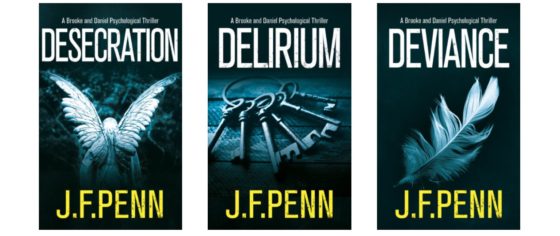Работайте офлайн с приложением Player FM !
London. A Personal History With J.F. Penn
Manage episode 301848848 series 2496001
“It is difficult to speak adequately or justly of London. It is not a pleasant place; it is not agreeable, or cheerful, or easy, or exempt from reproach. It is only magnificent.” Henry James
London can never be contained or defined in one way. Everyone has a different perspective and experience that changes over time, and my relationship with the city has certainly evolved over the years.
My Brooke and Daniel crime thrillers are set there, and my love for the city resonates within those pages through the eyes of Jamie Brooke, but it certainly wasn’t always that way.
In this episode, I’ll talk a bit about the history and highlights of the city and how it’s played a part in my life. I can’t possibly cover it all, but I can give you a glimpse.
- 1997-2000 Cool Britannia. London in my early twenties
- 2011-2015 Literary London. A new career in my mid-thirties
- 2015 onwards. City of inspiration in my forties
- Visiting London — places to visit and tips on making the most of it
- Recommended walks and books
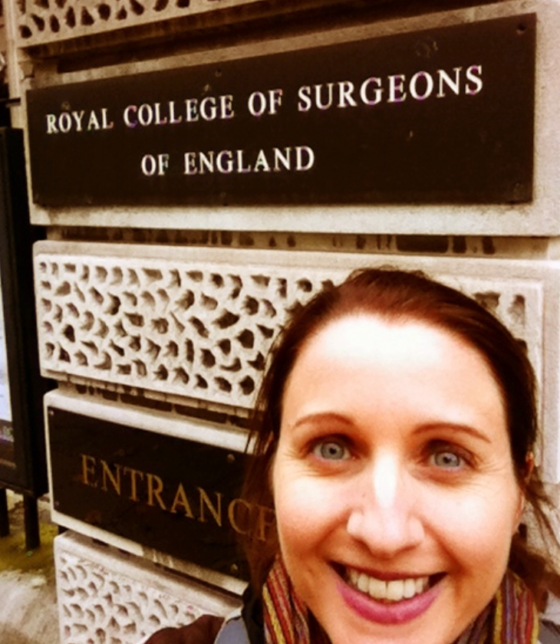
London can be whatever you want it to be — if you have the budget — and the key to getting the most from the city is choosing your focus.
For culture, art and architecture, there are museums and art galleries, churches and modern art as well as some of the most iconic buildings in Europe.
If you love nature, London is one of the greenest cities in the world, with 3000 parks of various sizes. You can walk by the river or the canal, visit Kew Gardens for exotic plants, Hampstead Heath for the wild, or cycle amongst the deer in Richmond Park.
For entertainment, you can watch live theatre or comedy every night, eat pretty much any international cuisine from Michelin star restaurants to street food from pop-ups stalls, visit markets like Borough for the best local produce, and there are fantastic bars and clubs throughout the city.
But as Henry James said, “It is not a pleasant place,” and it is not easy — as I found in my first experience of London nearly 25 years ago.
1997-2000 Cool Britannia. London in my early twenties
I went to school in Bristol, a few hours west of London, so I’d visited the city over the years for school trips. I even spent a summer working there in my final year of university, but my relationship with the city really began in the summer of 1997 after graduating from Oxford.
Five of us, friends from Uni, rented a shared house in Tooting Broadway, and although we all worked professional jobs in consulting or accounting, the house was always a mess. There were constant arguments about washing up and cleaning the place, but we had a great curry house, the Shahnaz, around the corner and we were close to the Tube. Tooting was not a good area back then, but now I wish I’d bought a place as it’s inevitably gentrified and the houses are now worth millions.
The city was dirty prior to the Millennium clean-up, and it was back in the days when you could smoke in bars, so my clothes always smelled of smoke the next morning. It’s strange now to think that was once acceptable.
We had parties and barbecues in the back garden of our Tooting house and it was the morning after one of those in August 1997 when we woke up to the news that Princess Diana had died. I remember watching the BBC with friends who’d slept on our floor with hangover coffee and bacon sandwiches.
But I wasn’t in the city much. It was the late 90s, and I worked on Millennium Bug projects, commuting to Brussels, Belgium every week on the red-eye Eurostar train. I had a regular minicab driver who would pick me up before four am and drive me to St Pancras Station. I’d watch the city go by and wonder how long I could keep up the pace of this life.
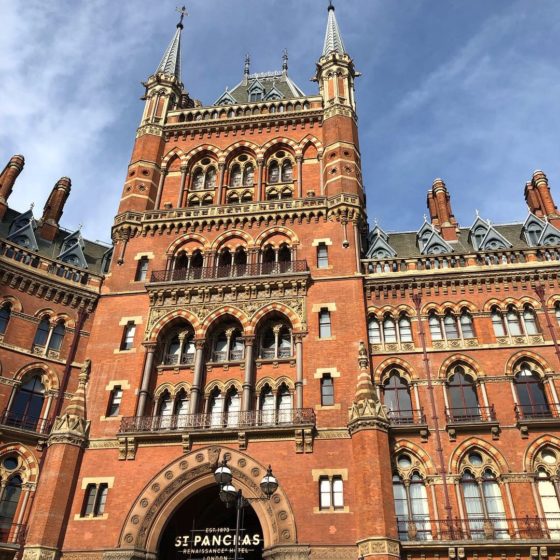
After Brussels, I worked on projects in Helsinki and then Southampton, on the South coast of England. I bought a bright blue Ford Ka and drove down several times a week, even in treacherous winter conditions. My boyfriend at the time lived in London and I was trying to keep the relationship alive, but we’d been together at University and inevitably, went our separate ways.
I had a stint working in central London at the head office of my client’s company as the millennium drew near and 1999 was a good year for consulting expense accounts. I was 24, a typical Gen X’er, working long hours and spending all my money on good times that I don’t remember much of. Those were the years of Cool Britannia and Britpop, with the soundtrack of Oasis and the Spice Girls, The Stone Roses and Blur, The Chemical Brothers and Prodigy. I danced to school disco nights at the Clapham Grand in south London and I lost way too many suit jackets in bars around Temple Tube station. There was a lot of tequila and I’m grateful there was no social media back then.
I don’t even have any photos of that time. Not a single one.
My journal entries are sporadic, mostly obsessed with sex and losing weight. The year 2000 was a big life marker, a mythical date when I could change everything. Or at least try to.
Everything I wrote back then was about escaping and leaving London, over and over again. Here’s one excerpt,
“There is no beauty in my daily life, no bliss, no peace — only drinking and work. I must get away and free myself from the ties that bind. I am greater than the small world that encompasses me, that crushes me into a tiny box. I need to break away from expectation. No more backwards glance — only pillars of salt there. Time to move on and burn the fields behind me.”
I talked about my burnout in episode 3 on escape, reinvention, curiosity, and challenge, the reasons why I travel. My 1999 sailing trip from Fiji to Vanuatu was the turning point and in March 2000, on my twenty-fifth birthday, I resigned my consulting job. Soon after, I left London for Australia and then New Zealand. I talked about Australia in episode 20, and I have an episode coming on New Zealand.
Back then in the 90s, I had no love for London and I left without looking back. As Samuel Johnson said, “when a man is tired of London, he is tired of life.” I was tired of both and needed a break from the city. Within a month of leaving, I was sleeping in swag in the outback desert of Australia, a very different kind of life.
On 5 March 2000, I wrote in my journal,
“London is the end for me now. I am casting it off, sloughing it away with the dirt and the claustrophobia for a new skin, a new me. Or perhaps a return to my old self, the one with soul.”
2011-2015 Literary London. A new career in my mid-thirties
“London goes beyond any boundary or convention. It contains every wish or word ever spoken, every action or gesture ever made, every harsh and noble statement ever expressed. It is illimitable. It is Infinite London.” Peter Ackroyd
I lived in New Zealand and Australia between 2000 and 2011 and returned to London as a tourist several times on the way to visit my family and friends, but I never expected to call it home.
In 2011, I moved back to London with my husband, Jonathan, who is a New Zealander with European heritage. He had a job as a medical statistician and I was contracting for an Australian mining company with an office in London, but I been writing since 2006 and had plans to leave my job as soon as possible.
We sold everything to move back, paid off our debts, and cut our expenses so I could make a go of being an author. We rented a one-bedroom basement flat in Clapham Common, south of the river, and although there were many issues with that flat, the low rent enabled me to leave my job soon after and we liked the area. We lived in London for four years (2011-2015) and in that time, I grew to love the city and appreciate its variety and opportunity and I wrote much of it into my novels.
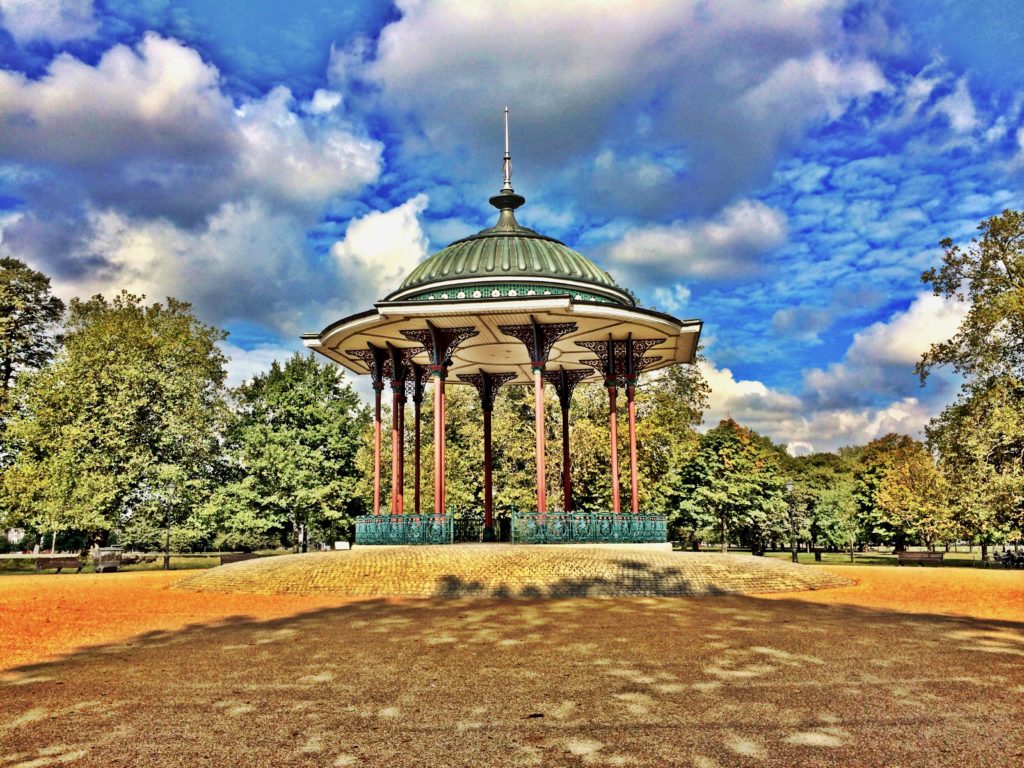
Our regular walk was around Clapham Common, and we would cross it to get to the Tube station. In the summer, every inch was filled with bodies roasting in the sun, and the smell of BBQ smoke rose up into the air from throwaway tinfoil barbecues from the local Sainsburys. There was a small pond stocked with fish every year where fishermen would camp out in green tents with little stoves, even though they were in the middle of the city. People find nature where they can, wherever they are.
When I left my job and started writing in the basement of the flat, I needed some structure in my day and I wanted to meet some people. I started working at the London Library on St James’ Square just behind the Waterstones on Piccadilly, one of the best bookshops in London. The London Library was established in 1841 and has had many famous literary members, including Agatha Christie, EM Forster, Winston Churchill, and Stephen Fry. It has wonderful reading rooms and an abundance of stacks on different levels for literary serendipity.
I wrote several novels there, including Desecration, my fifth thriller and the one where I really found my voice. It’s the first in my Brooke and Daniel trilogy and all those books are set in London locations. You can hear my love for the city in the thoughts of my detective, Jamie Brooke, and my ARKANE agent, Morgan Sierra. Amazon even made a video of me there back in 2015 as well as a separate one with me and my Dad and Clapham Common if you want a glimpse of my life back then.
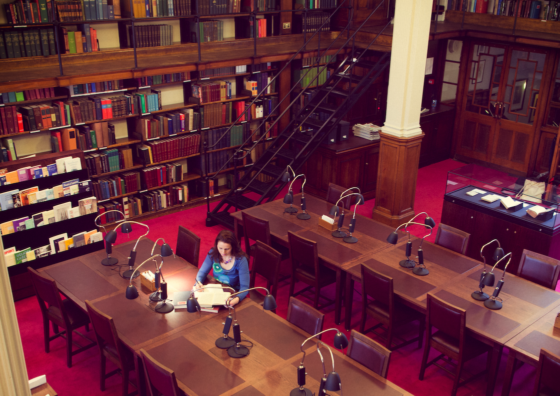
When I left London the first time, I started a new life down under, but I came back to start a different kind of new life — one where London was a rich source of research and the springboard for my career as an author and creative entrepreneur. I devoured everything as creative fuel for my writing. I attended events and networking sessions, conferences, and book fairs. No one knew me as an IT consultant anymore. I uncovered a new self and discovered that I could live in London, but this time with soul.
I met other writers and London became more of a community of like-minded creatives than a place where I drank to drown my misery — although of course, I still have my share of gin and tonic, and author events in the UK are usually well-lubricated.
At the weekends, Jonathan and I explored different areas of the city. We bought Brompton bikes and cycled the canal path from Kings Cross to Camden Market and on to Little Venice. We also cycled the Thames Path all the way to Hampton Court, one of Henry VIII’s favourite palaces; and through Richmond Park amongst the deer, as well as out through East London Docklands to the Thames Barrier and back through Greenwich.
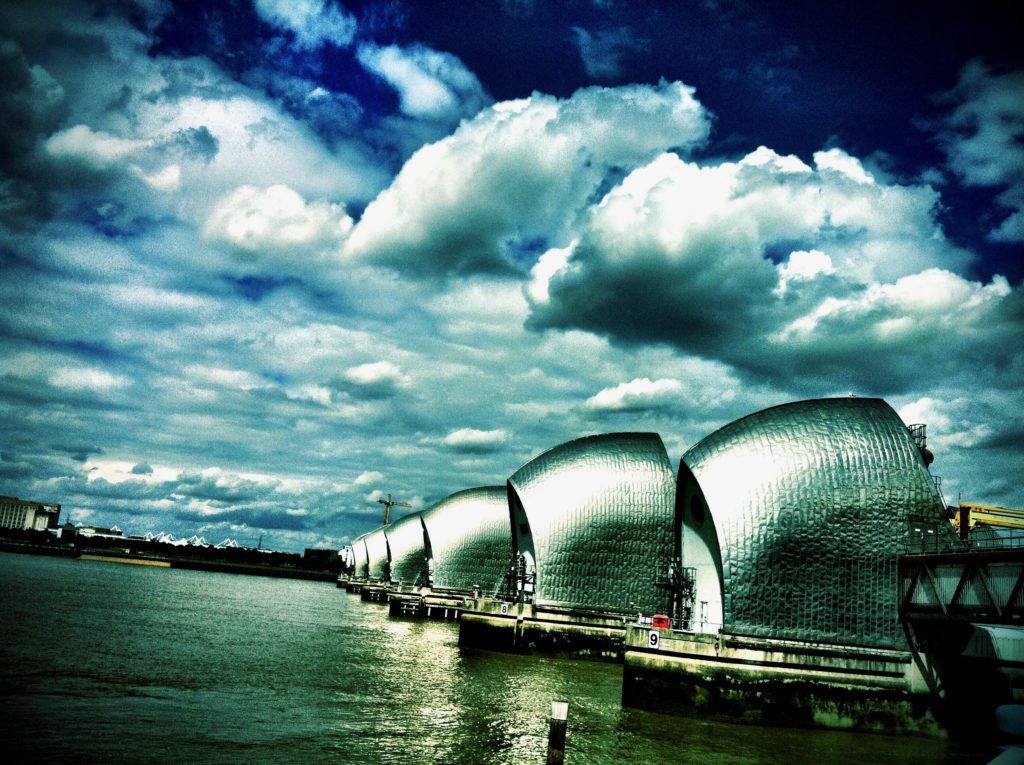
We kayaked down the Thames to Tower Bridge, picnicking by Traitor’s Gate at low tide at the entrance to the Tower of London.
I appreciated my country so much more after years away in Australia and New Zealand, where my need for culture and architecture and European history became parched and dry. Seeing England through Jonathan’s eyes was a fresh experience. He is an Anglophile and sees England as the best of countries, even if its own people don’t often see it that way. I no longer take it for granted.
We appreciated the seasons after the monotony of Queensland, and we have pictures of us grinning on Clapham Common with handfuls of conkers in the autumn and wearing woolly hats in the snow in winter.
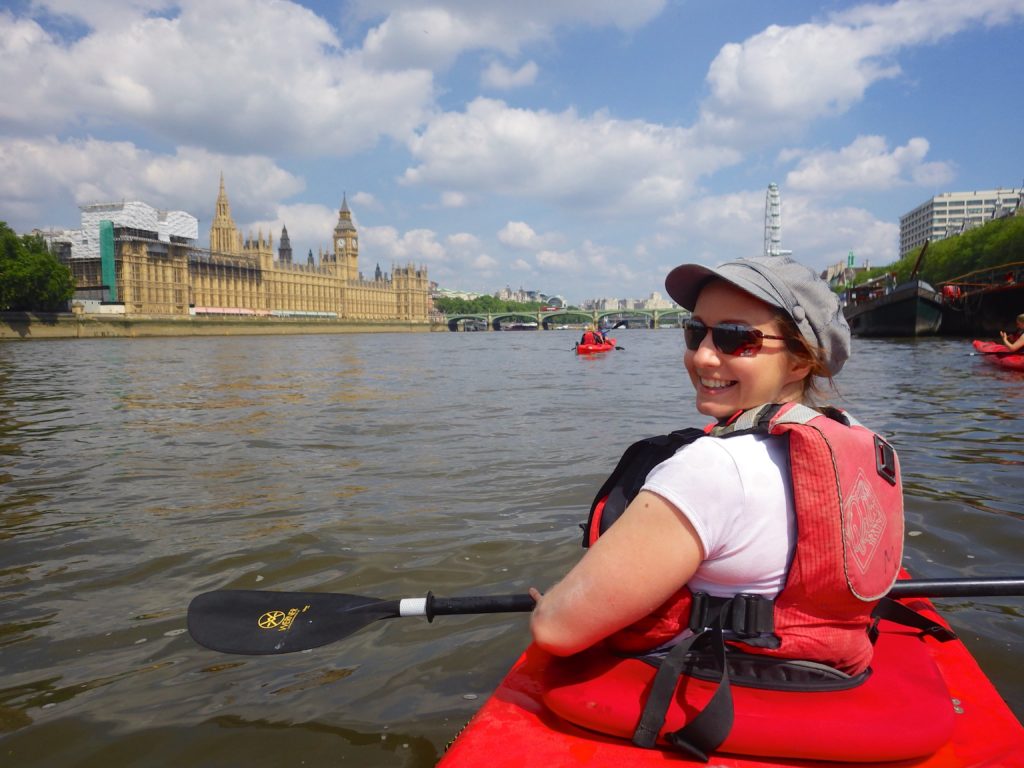
We loved walking the South Bank of the Thames from Southwark to Westminster, which I still walk almost every time I go to London. It encompasses Southwark Cathedral and foodie Borough Market, the Globe Theatre and the Tate Modern, the second-hand book market under Waterloo Bridge and plenty of food trucks along the banks of the river, the skate park covered in graffiti, and passenger ferries, industrial barges, and tourist boats passing on the river beside you.
From my journal at the time:
“We love London for its infinite variety. You could go every day to the British Museum and not exhaust its depth. The river Thames, ancient and eternal, pulses with the tide and tugs the city along with it. There are layers of history to delve into; the stuff of legends leaks from these walls; the streets are walked by the long dead.
But the living too are why we’re here. There were 35 nationalities at Jonathan’s UK citizenship ceremony in Brixton. That’s a multicultural London borough to be proud of.
The urban life is birdsong and foxes scavenging, squirrels on the common and cats who treat the city as we do — as one big playground. I love this London. The free-to-choose London, the cosmopolitan-don’t care city.”
So London in those years was my constant inspiration, and its locations appear in most of my books. My various settings are a tour of the city in themselves and one day, I intend to make some kind of augmented reality walking tour where I can guide you through my London. In the meantime, you can read about it in my books.
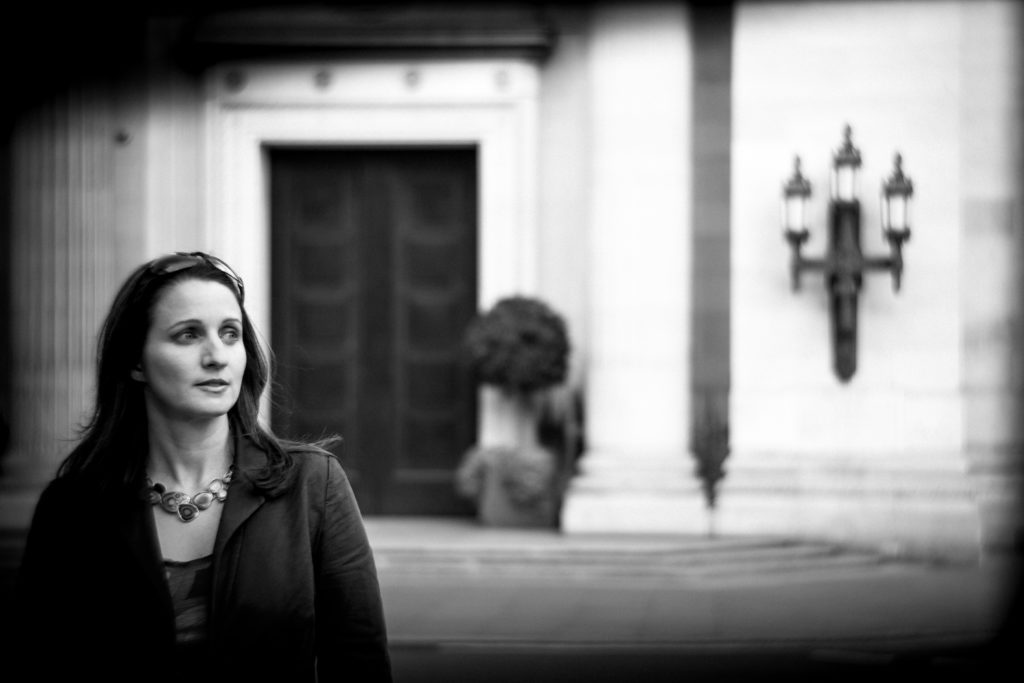
Here are just some of the London settings for my stories:
- The British Museum (Crypt of Bone, Day of the Vikings, Desecration)
- Trafalgar Square and St Martin’s in the Fields Church, under which lies the labyrinthine ARKANE headquarters in my fictional series. Keep an eye on the fourth plinth in Trafalgar Square, which displays different sculptures every year. (Crypt of Bone, Destroyer of Worlds)
- The Hunterian Anatomy Museum in the Royal College of Surgeons (Desecration)
- The Tate Modern (Deviance)
- The John Soane Museum (Ark of Blood, Tree of Life)
- Freemasons Grand Lodge of England (Ark of Blood)
- Freud’s house in Hampstead, near Hampstead Heath and Highgate Cemetery (Ark of Blood)
- The British Library (Day of the Vikings)
- Crossbones Garden of Remembrance in Southwark (Deviance)
- The Shard (Deviance)
- The Imperial War Museum, which was once Bedlam (Delirium)
- Houses of Parliament (Delirium)
- St Paul’s Cathedral (Delirium)
- Borough Market (Deviance)
- Southwark Cathedral (Deviance)
2015 onwards. City of inspiration in my forties
As the Greek philosopher Heraclitus said, “you can never step in the same river twice.” The river Thames has witnessed the changing city of London for two thousand years, and inevitably our life changed, too.
By 2015, my creative business was doing well. Jonathan was burned out from traveling as part of his consulting job, and we were well over living in the tiny basement flat.
We looked at buying a place in London, but the price for a two-bedroom flat in Clapham was way out of our range. We would have had to move further out into the commuter belt to afford something, but that would mean losing all the benefits of being close to the centre of London. So we looked even further afield, choosing to rent in Bath and try living somewhere new. I did a personal episode about Bath in episode 40 on Druids, Freemasons, and Frankenstein, the darker side of Bath, if you’d like to hear about that and my Mapwalker trilogy was inspired by living here.
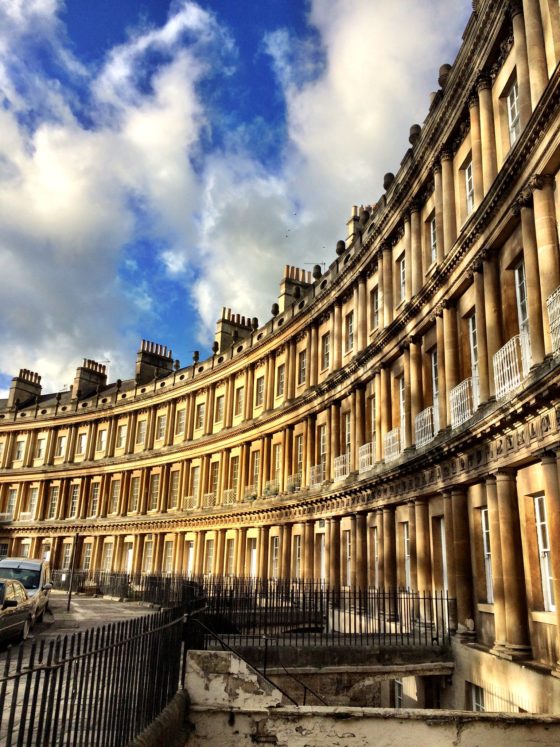
For the first six months after we left London, we thought we’d made a terrible mistake, and we longed to return to the city. There’s a buzz and an energy to London. You have to walk faster to keep pace with other people or you drown in the fast-moving crowd in the Tube or on the streets in rush hour. There is so much sensory input that if you try to take everything in, you will go mad from the overload. There’s constant noise and light and stimulation and fun and things to do and places to go and people to talk to or listen to and things to learn. It’s exhilarating and exhausting and when you’re in the thick of it, and it’s addictive and destructive at the same time.
It took months for that buzz to fade, but now when I go back, I don’t know how we lived in it. I love being there for a few days but then I long for peace again.
We’re under two hours away from London on the train, but Bath is much slower by comparison. It has everything London has — history, culture, entertainment, nature — but on a much smaller scale. We bought a house overlooking the valley in the spring of 2019 and I can see the Cotswolds Area of Outstanding Natural Beauty from our loft window. Our long walks around the area were precious in the multiple lockdowns of the pandemic. If you get the train to Bath from London, look out the right side as you approach the city and we are high on the terraces above.
So, London is not my home now, but it still draws me.
I go there to satisfy my wanderlust during these times when travel is still difficult. I go for exhibitions at the museums and art galleries, for author events or to meet with friends, or just to walk the city and stay in the centre of town, lost in the crowds who are starting to return now the pandemic restrictions have eased.
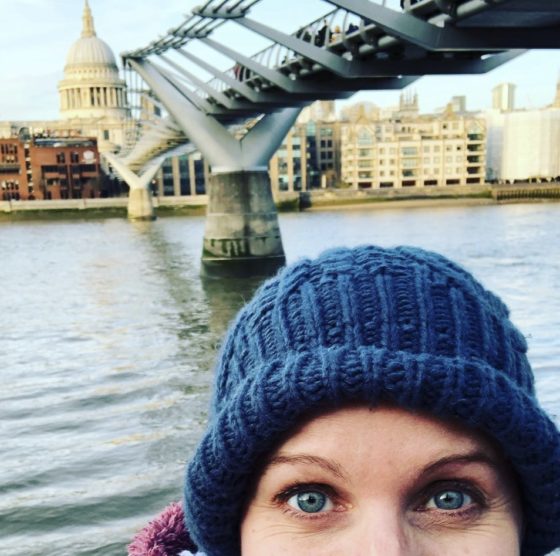
Jonathan hasn’t been back for almost two years, since before the pandemic. He doesn’t have the same fernweh, that longing for far-off places, but I can’t stay away. I spent a night in Southwark and walked out in the dark of the autumn morning at the beginning of my pilgrimage to Canterbury, just before another lockdown prevented movement again. I went in to walk South Bank and see friends, and for a day trip to see the Becket exhibition at the British Museum, as soon as it was open again. I go to drink in the culture, to break the routine of life, to grasp that buzz even just for a short time.
I love the anonymity of London, the same feeling you get in New York or any other mega-city. So many people going about their lives with no thought of you. So many places that have stood for generations and will stand for many more. It’s the same insignificance I feel in the face of vast nature. I’m comforted by the fact that my life is but a brief flicker of light, gone so soon, while these places and these people continue.
Visiting London
So those are some of my personal feelings about London, but I also want to give you some tips if you want to visit as a tourist. There is too much to do for any single trip — perhaps even for a lifetime — so you have to choose carefully.
London is a city of layers and if you’re interested in history, you can dig through 2000 years of it. The Romans turned a Celtic village into Londinium after their invasion in 43 AD. It was the largest city in Britannia and an international port for several hundred years. The Museum of London has artifacts from the time and there’s a Roman wall nearby in the City of London or you can visit the Mithraeum temple.
For the medieval period, visit Westminster Abbey, the coronation church since 1066 when William the Conqueror marched into London in the Norman conquest. With its Gothic architecture and intricate vaulted ceilings, it’s the burial place of sixteen monarchs as well as hundreds of notable people, including Geoffrey Chaucer, Charles Darwin and Isaac Newton, and in modern times, Stephen Hawking.
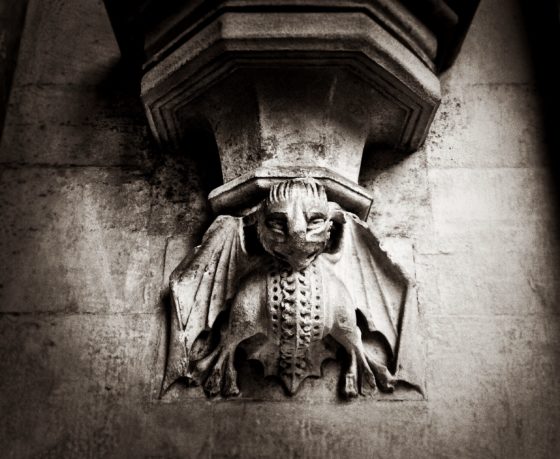
If you enjoy ecclesiastical architecture — and religious thrillers — then you can also visit the 12th century Temple Church, built by the Knights Templar and featured in Dan Brown’s The Da Vinci Code. It’s a round church with effigies of knights near the entrance. They have plays and concerts you can attend by candlelight.
For the Tudor period, visit the Tower of London, where Anne Boleyn was beheaded. It was founded in the 11th century, expanded over generations, and used enthusiastically in Tudor times. Elizabeth I was kept there before she became Queen and you can see Henry VIII’s armour inside. There are suits from his different ages — an athletic, slim fit in his twenties to the obese, diseased body later in life. I read all the Jean Plaidy historical novels in my teens and later Philippa Gregory’s about the time, and of course, Hilary Mantel’s Wolf Hall trilogy also brings this era alive.
You can visit the replica of Shakespeare’s Globe Theatre in Southwark, one of my favourite areas of London, which I’ve written about in my Brooke and Daniel crime thrillers. The ruins of Winchester Palace still stand near to Southwark Cathedral, and the Crossbones Memorial Garden, where the outcast dead, the sex workers of the medieval period were buried in a mass grave. It was only discovered in recent times when they expanded the Crossrail train lines.
In 1666, the Great Fire of London devastated the city, destroying the Roman and medieval period buildings. But it cleared the way for new architecture and better urban planning. Sir Christopher Wren built St Paul’s Cathedral, whose dome is a landmark in the city.
Wren also designed the Old Royal Naval College in Greenwich, east on the river from the center of London. If you enjoy all things nautical, then take the ferry to Greenwich and visit the Cutty Sark, the National Maritime Museum and the Royal Observatory, where you can stand astride the Prime Meridian Line, which divides the eastern and western hemispheres of the earth.
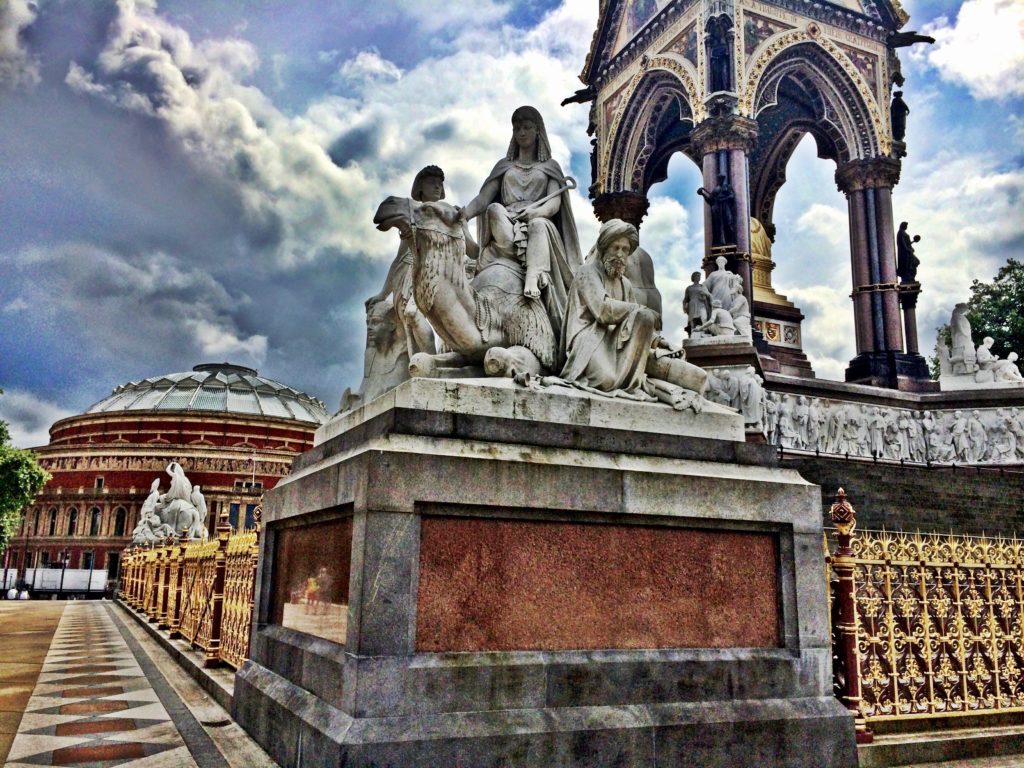
For Victorian London, you could spend an entire trip in the galleries and museums around South Kensington. The Natural History Museum is incredible outside and within. Look out for the unusual carvings and gargoyles. The V&A has visiting exhibitions but one of my favourite places is the Cast Collection, where you can visit Michelangelo’s David or the Horned Moses next to Trajan’s Column and detail from Rosslyn Chapel in Scotland, which also featured in The Da Vinci Code.
Highgate Cemetery was also established in the Victorian era, one of the Magnificent Seven cemeteries that were necessary to contain London’s dead after the city grew under the Industrial Revolution. If you love literary history and architecture, Highgate is a must-visit destination and I recommend Audrey Niffenegger’s Her Fearful Symmetry as a wonderful glimpse into the area. You can also walk in the footsteps of Charles Dickens or Jack the Ripper for those of a darker persuasion.
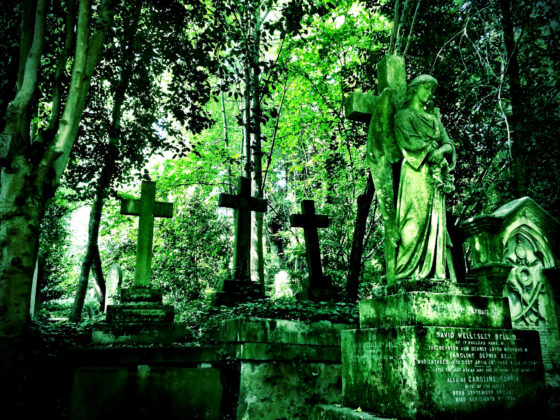
If you like modern architecture, London has plenty of it and many of the largest buildings have iconic names to match their shape. The Shard, the Walkie-Talkie, the Gherkin, the Cheesegrater, and the London Eye. For modern art, visit the Tate Modern as part of a walk along South Bank.
London is a dense city, with so much to see and do, which is why I will keep visiting, probably for the rest of my life. As Henry James said, “it is only magnificent,” and you will have to choose your path through the city.
To make the best of London:
Wear comfortable shoes and walk as much as possible. Yes, you can get the London Underground (the Tube) but so many of the biggest attractions are within walking distance of each other and it’s a great way to see the city. Do not drive in London. You will regret it! Walk, take the Tube or bus or train or Uber or mini-cab.
Budget time and energy to see some museums and art galleries, but don’t do more than one major destination per day or you will exhaust yourself. Book well in advance if you want to see something particular. Check out Londonist or Time Out London for up-to-date details to what’s on.
Stay in central London so you can walk and experience the city without a long Tube journey. I always stay in Premier Inn hotels or hubs which have everything you need, including a quiet night’s sleep, and won’t break the bank — although everything is expensive in London, so expect to spend some money.
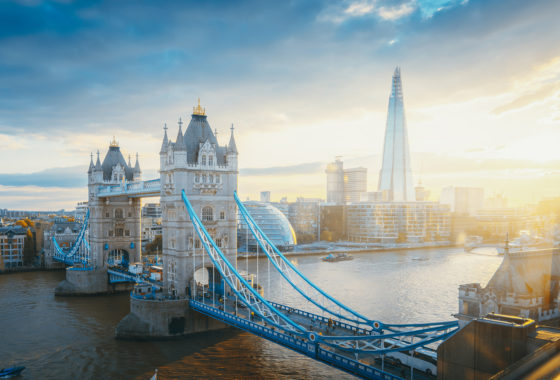
A couple of my favourite walks are:
South Bank from Tower Bridge to Westminster along the Thames passing Southwark Cathedral and Borough Market, Shakespeare’s Globe theatre, the Tate Modern, shops and street food pop-ups near the Southbank Centre, and the London Eye. The Tower of London is on the north side of the river at the start and the Houses of Parliament and Westminster Abbey are on the north side at the end. You can walk this in just over an hour, but if you visited all the sites along the way, it would be a fascinating week.
Kings Cross to Trafalgar Square, passing the British Library, the Wellcome Collection, the British Museum, and Covent Garden. This walk has the benefit of some fantastic bookshops including Foyles, Treadwells, the second-hand bookshops of Charing Cross Road, and Waterstones Piccadilly.
Kings Cross to Little Venice at Paddington along the Regent’s Canal past Camden Market and the Zoo. The British Library is near the start along with St Pancras Old Church, famous for the Hardy Tree. Thomas Hardy, author of Tess of the D’Urbervilles, worked for an architecture firm back in the mid-1860s and was responsible for moving the dead to make way for the trainline. He arranged the headstones around an ash tree.
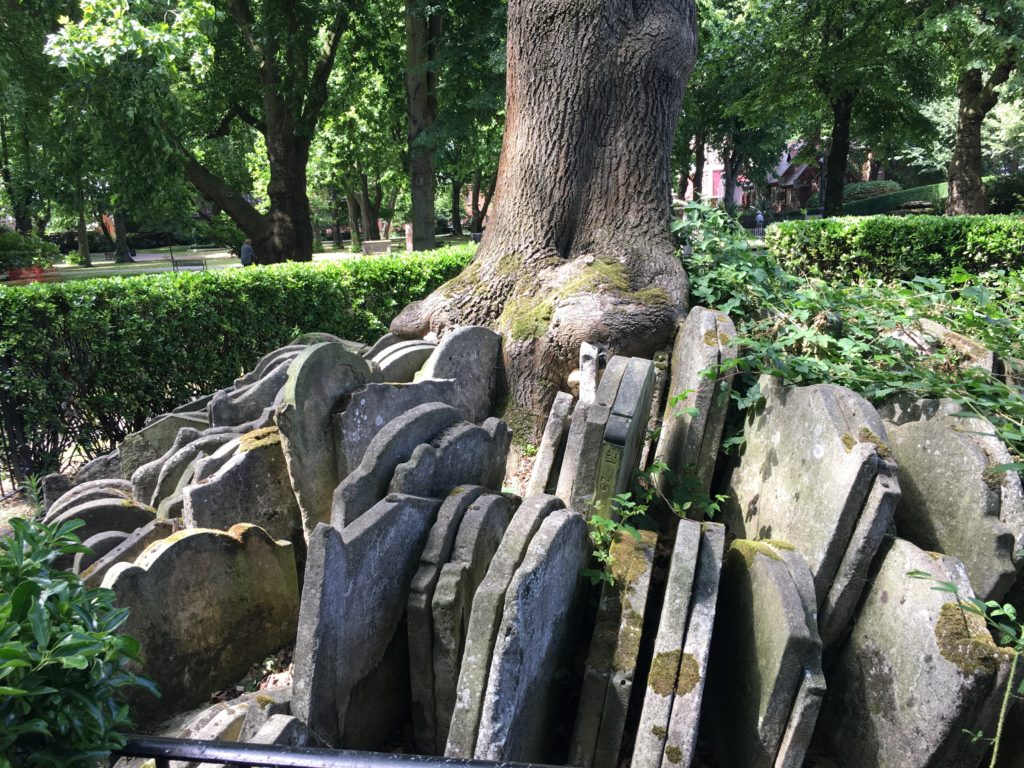
You can also see the hand-written and hand-edited manuscript of Tess in the British Library. I love seeing how Thomas Hardy shaped his words, and it’s comforting to know that such a writer, considered one of England’s finest, needed to edit his work as much as any other author.

Books about or set in London
There are many, so I have picked some of the more unusual ones.
- London: The Biography — Peter Ackroyd
- Curiocity: An Alternative A-Z of London — Henry Eliot and Matt Lloyd-Rose
- Secret London: An Unusual Guide — Rachel Howard and Bill Nash
- London is a Forest — Paul Wood
- Black London: History, Art & Culture in Over 120 Places — Avril Nanton & Jody Burton
- Londonopolis: A Curious and Quirky History of London — Martin Latham
- Rivers of London fantasy series — Ben Aaronovitch
- Desecration, Delirium, and Deviance. Brooke and Daniel Crime Thrillers — J.F. Penn
- London Lesbian Romance series — Claire Lydon
You can find many more in the fantastic bookstores of London. Try Stanfords for travel; Treadwell’s for the occult; Foyles or Waterstones for everything.
So, that is a glimpse of my London, and I hope you will visit to form your own impressions of this magnificent city.
The post London. A Personal History With J.F. Penn appeared first on Books And Travel.
92 эпизодов
Manage episode 301848848 series 2496001
“It is difficult to speak adequately or justly of London. It is not a pleasant place; it is not agreeable, or cheerful, or easy, or exempt from reproach. It is only magnificent.” Henry James
London can never be contained or defined in one way. Everyone has a different perspective and experience that changes over time, and my relationship with the city has certainly evolved over the years.
My Brooke and Daniel crime thrillers are set there, and my love for the city resonates within those pages through the eyes of Jamie Brooke, but it certainly wasn’t always that way.
In this episode, I’ll talk a bit about the history and highlights of the city and how it’s played a part in my life. I can’t possibly cover it all, but I can give you a glimpse.
- 1997-2000 Cool Britannia. London in my early twenties
- 2011-2015 Literary London. A new career in my mid-thirties
- 2015 onwards. City of inspiration in my forties
- Visiting London — places to visit and tips on making the most of it
- Recommended walks and books

London can be whatever you want it to be — if you have the budget — and the key to getting the most from the city is choosing your focus.
For culture, art and architecture, there are museums and art galleries, churches and modern art as well as some of the most iconic buildings in Europe.
If you love nature, London is one of the greenest cities in the world, with 3000 parks of various sizes. You can walk by the river or the canal, visit Kew Gardens for exotic plants, Hampstead Heath for the wild, or cycle amongst the deer in Richmond Park.
For entertainment, you can watch live theatre or comedy every night, eat pretty much any international cuisine from Michelin star restaurants to street food from pop-ups stalls, visit markets like Borough for the best local produce, and there are fantastic bars and clubs throughout the city.
But as Henry James said, “It is not a pleasant place,” and it is not easy — as I found in my first experience of London nearly 25 years ago.
1997-2000 Cool Britannia. London in my early twenties
I went to school in Bristol, a few hours west of London, so I’d visited the city over the years for school trips. I even spent a summer working there in my final year of university, but my relationship with the city really began in the summer of 1997 after graduating from Oxford.
Five of us, friends from Uni, rented a shared house in Tooting Broadway, and although we all worked professional jobs in consulting or accounting, the house was always a mess. There were constant arguments about washing up and cleaning the place, but we had a great curry house, the Shahnaz, around the corner and we were close to the Tube. Tooting was not a good area back then, but now I wish I’d bought a place as it’s inevitably gentrified and the houses are now worth millions.
The city was dirty prior to the Millennium clean-up, and it was back in the days when you could smoke in bars, so my clothes always smelled of smoke the next morning. It’s strange now to think that was once acceptable.
We had parties and barbecues in the back garden of our Tooting house and it was the morning after one of those in August 1997 when we woke up to the news that Princess Diana had died. I remember watching the BBC with friends who’d slept on our floor with hangover coffee and bacon sandwiches.
But I wasn’t in the city much. It was the late 90s, and I worked on Millennium Bug projects, commuting to Brussels, Belgium every week on the red-eye Eurostar train. I had a regular minicab driver who would pick me up before four am and drive me to St Pancras Station. I’d watch the city go by and wonder how long I could keep up the pace of this life.

After Brussels, I worked on projects in Helsinki and then Southampton, on the South coast of England. I bought a bright blue Ford Ka and drove down several times a week, even in treacherous winter conditions. My boyfriend at the time lived in London and I was trying to keep the relationship alive, but we’d been together at University and inevitably, went our separate ways.
I had a stint working in central London at the head office of my client’s company as the millennium drew near and 1999 was a good year for consulting expense accounts. I was 24, a typical Gen X’er, working long hours and spending all my money on good times that I don’t remember much of. Those were the years of Cool Britannia and Britpop, with the soundtrack of Oasis and the Spice Girls, The Stone Roses and Blur, The Chemical Brothers and Prodigy. I danced to school disco nights at the Clapham Grand in south London and I lost way too many suit jackets in bars around Temple Tube station. There was a lot of tequila and I’m grateful there was no social media back then.
I don’t even have any photos of that time. Not a single one.
My journal entries are sporadic, mostly obsessed with sex and losing weight. The year 2000 was a big life marker, a mythical date when I could change everything. Or at least try to.
Everything I wrote back then was about escaping and leaving London, over and over again. Here’s one excerpt,
“There is no beauty in my daily life, no bliss, no peace — only drinking and work. I must get away and free myself from the ties that bind. I am greater than the small world that encompasses me, that crushes me into a tiny box. I need to break away from expectation. No more backwards glance — only pillars of salt there. Time to move on and burn the fields behind me.”
I talked about my burnout in episode 3 on escape, reinvention, curiosity, and challenge, the reasons why I travel. My 1999 sailing trip from Fiji to Vanuatu was the turning point and in March 2000, on my twenty-fifth birthday, I resigned my consulting job. Soon after, I left London for Australia and then New Zealand. I talked about Australia in episode 20, and I have an episode coming on New Zealand.
Back then in the 90s, I had no love for London and I left without looking back. As Samuel Johnson said, “when a man is tired of London, he is tired of life.” I was tired of both and needed a break from the city. Within a month of leaving, I was sleeping in swag in the outback desert of Australia, a very different kind of life.
On 5 March 2000, I wrote in my journal,
“London is the end for me now. I am casting it off, sloughing it away with the dirt and the claustrophobia for a new skin, a new me. Or perhaps a return to my old self, the one with soul.”
2011-2015 Literary London. A new career in my mid-thirties
“London goes beyond any boundary or convention. It contains every wish or word ever spoken, every action or gesture ever made, every harsh and noble statement ever expressed. It is illimitable. It is Infinite London.” Peter Ackroyd
I lived in New Zealand and Australia between 2000 and 2011 and returned to London as a tourist several times on the way to visit my family and friends, but I never expected to call it home.
In 2011, I moved back to London with my husband, Jonathan, who is a New Zealander with European heritage. He had a job as a medical statistician and I was contracting for an Australian mining company with an office in London, but I been writing since 2006 and had plans to leave my job as soon as possible.
We sold everything to move back, paid off our debts, and cut our expenses so I could make a go of being an author. We rented a one-bedroom basement flat in Clapham Common, south of the river, and although there were many issues with that flat, the low rent enabled me to leave my job soon after and we liked the area. We lived in London for four years (2011-2015) and in that time, I grew to love the city and appreciate its variety and opportunity and I wrote much of it into my novels.

Our regular walk was around Clapham Common, and we would cross it to get to the Tube station. In the summer, every inch was filled with bodies roasting in the sun, and the smell of BBQ smoke rose up into the air from throwaway tinfoil barbecues from the local Sainsburys. There was a small pond stocked with fish every year where fishermen would camp out in green tents with little stoves, even though they were in the middle of the city. People find nature where they can, wherever they are.
When I left my job and started writing in the basement of the flat, I needed some structure in my day and I wanted to meet some people. I started working at the London Library on St James’ Square just behind the Waterstones on Piccadilly, one of the best bookshops in London. The London Library was established in 1841 and has had many famous literary members, including Agatha Christie, EM Forster, Winston Churchill, and Stephen Fry. It has wonderful reading rooms and an abundance of stacks on different levels for literary serendipity.
I wrote several novels there, including Desecration, my fifth thriller and the one where I really found my voice. It’s the first in my Brooke and Daniel trilogy and all those books are set in London locations. You can hear my love for the city in the thoughts of my detective, Jamie Brooke, and my ARKANE agent, Morgan Sierra. Amazon even made a video of me there back in 2015 as well as a separate one with me and my Dad and Clapham Common if you want a glimpse of my life back then.

When I left London the first time, I started a new life down under, but I came back to start a different kind of new life — one where London was a rich source of research and the springboard for my career as an author and creative entrepreneur. I devoured everything as creative fuel for my writing. I attended events and networking sessions, conferences, and book fairs. No one knew me as an IT consultant anymore. I uncovered a new self and discovered that I could live in London, but this time with soul.
I met other writers and London became more of a community of like-minded creatives than a place where I drank to drown my misery — although of course, I still have my share of gin and tonic, and author events in the UK are usually well-lubricated.
At the weekends, Jonathan and I explored different areas of the city. We bought Brompton bikes and cycled the canal path from Kings Cross to Camden Market and on to Little Venice. We also cycled the Thames Path all the way to Hampton Court, one of Henry VIII’s favourite palaces; and through Richmond Park amongst the deer, as well as out through East London Docklands to the Thames Barrier and back through Greenwich.

We kayaked down the Thames to Tower Bridge, picnicking by Traitor’s Gate at low tide at the entrance to the Tower of London.
I appreciated my country so much more after years away in Australia and New Zealand, where my need for culture and architecture and European history became parched and dry. Seeing England through Jonathan’s eyes was a fresh experience. He is an Anglophile and sees England as the best of countries, even if its own people don’t often see it that way. I no longer take it for granted.
We appreciated the seasons after the monotony of Queensland, and we have pictures of us grinning on Clapham Common with handfuls of conkers in the autumn and wearing woolly hats in the snow in winter.

We loved walking the South Bank of the Thames from Southwark to Westminster, which I still walk almost every time I go to London. It encompasses Southwark Cathedral and foodie Borough Market, the Globe Theatre and the Tate Modern, the second-hand book market under Waterloo Bridge and plenty of food trucks along the banks of the river, the skate park covered in graffiti, and passenger ferries, industrial barges, and tourist boats passing on the river beside you.
From my journal at the time:
“We love London for its infinite variety. You could go every day to the British Museum and not exhaust its depth. The river Thames, ancient and eternal, pulses with the tide and tugs the city along with it. There are layers of history to delve into; the stuff of legends leaks from these walls; the streets are walked by the long dead.
But the living too are why we’re here. There were 35 nationalities at Jonathan’s UK citizenship ceremony in Brixton. That’s a multicultural London borough to be proud of.
The urban life is birdsong and foxes scavenging, squirrels on the common and cats who treat the city as we do — as one big playground. I love this London. The free-to-choose London, the cosmopolitan-don’t care city.”
So London in those years was my constant inspiration, and its locations appear in most of my books. My various settings are a tour of the city in themselves and one day, I intend to make some kind of augmented reality walking tour where I can guide you through my London. In the meantime, you can read about it in my books.

Here are just some of the London settings for my stories:
- The British Museum (Crypt of Bone, Day of the Vikings, Desecration)
- Trafalgar Square and St Martin’s in the Fields Church, under which lies the labyrinthine ARKANE headquarters in my fictional series. Keep an eye on the fourth plinth in Trafalgar Square, which displays different sculptures every year. (Crypt of Bone, Destroyer of Worlds)
- The Hunterian Anatomy Museum in the Royal College of Surgeons (Desecration)
- The Tate Modern (Deviance)
- The John Soane Museum (Ark of Blood, Tree of Life)
- Freemasons Grand Lodge of England (Ark of Blood)
- Freud’s house in Hampstead, near Hampstead Heath and Highgate Cemetery (Ark of Blood)
- The British Library (Day of the Vikings)
- Crossbones Garden of Remembrance in Southwark (Deviance)
- The Shard (Deviance)
- The Imperial War Museum, which was once Bedlam (Delirium)
- Houses of Parliament (Delirium)
- St Paul’s Cathedral (Delirium)
- Borough Market (Deviance)
- Southwark Cathedral (Deviance)
2015 onwards. City of inspiration in my forties
As the Greek philosopher Heraclitus said, “you can never step in the same river twice.” The river Thames has witnessed the changing city of London for two thousand years, and inevitably our life changed, too.
By 2015, my creative business was doing well. Jonathan was burned out from traveling as part of his consulting job, and we were well over living in the tiny basement flat.
We looked at buying a place in London, but the price for a two-bedroom flat in Clapham was way out of our range. We would have had to move further out into the commuter belt to afford something, but that would mean losing all the benefits of being close to the centre of London. So we looked even further afield, choosing to rent in Bath and try living somewhere new. I did a personal episode about Bath in episode 40 on Druids, Freemasons, and Frankenstein, the darker side of Bath, if you’d like to hear about that and my Mapwalker trilogy was inspired by living here.

For the first six months after we left London, we thought we’d made a terrible mistake, and we longed to return to the city. There’s a buzz and an energy to London. You have to walk faster to keep pace with other people or you drown in the fast-moving crowd in the Tube or on the streets in rush hour. There is so much sensory input that if you try to take everything in, you will go mad from the overload. There’s constant noise and light and stimulation and fun and things to do and places to go and people to talk to or listen to and things to learn. It’s exhilarating and exhausting and when you’re in the thick of it, and it’s addictive and destructive at the same time.
It took months for that buzz to fade, but now when I go back, I don’t know how we lived in it. I love being there for a few days but then I long for peace again.
We’re under two hours away from London on the train, but Bath is much slower by comparison. It has everything London has — history, culture, entertainment, nature — but on a much smaller scale. We bought a house overlooking the valley in the spring of 2019 and I can see the Cotswolds Area of Outstanding Natural Beauty from our loft window. Our long walks around the area were precious in the multiple lockdowns of the pandemic. If you get the train to Bath from London, look out the right side as you approach the city and we are high on the terraces above.
So, London is not my home now, but it still draws me.
I go there to satisfy my wanderlust during these times when travel is still difficult. I go for exhibitions at the museums and art galleries, for author events or to meet with friends, or just to walk the city and stay in the centre of town, lost in the crowds who are starting to return now the pandemic restrictions have eased.

Jonathan hasn’t been back for almost two years, since before the pandemic. He doesn’t have the same fernweh, that longing for far-off places, but I can’t stay away. I spent a night in Southwark and walked out in the dark of the autumn morning at the beginning of my pilgrimage to Canterbury, just before another lockdown prevented movement again. I went in to walk South Bank and see friends, and for a day trip to see the Becket exhibition at the British Museum, as soon as it was open again. I go to drink in the culture, to break the routine of life, to grasp that buzz even just for a short time.
I love the anonymity of London, the same feeling you get in New York or any other mega-city. So many people going about their lives with no thought of you. So many places that have stood for generations and will stand for many more. It’s the same insignificance I feel in the face of vast nature. I’m comforted by the fact that my life is but a brief flicker of light, gone so soon, while these places and these people continue.
Visiting London
So those are some of my personal feelings about London, but I also want to give you some tips if you want to visit as a tourist. There is too much to do for any single trip — perhaps even for a lifetime — so you have to choose carefully.
London is a city of layers and if you’re interested in history, you can dig through 2000 years of it. The Romans turned a Celtic village into Londinium after their invasion in 43 AD. It was the largest city in Britannia and an international port for several hundred years. The Museum of London has artifacts from the time and there’s a Roman wall nearby in the City of London or you can visit the Mithraeum temple.
For the medieval period, visit Westminster Abbey, the coronation church since 1066 when William the Conqueror marched into London in the Norman conquest. With its Gothic architecture and intricate vaulted ceilings, it’s the burial place of sixteen monarchs as well as hundreds of notable people, including Geoffrey Chaucer, Charles Darwin and Isaac Newton, and in modern times, Stephen Hawking.

If you enjoy ecclesiastical architecture — and religious thrillers — then you can also visit the 12th century Temple Church, built by the Knights Templar and featured in Dan Brown’s The Da Vinci Code. It’s a round church with effigies of knights near the entrance. They have plays and concerts you can attend by candlelight.
For the Tudor period, visit the Tower of London, where Anne Boleyn was beheaded. It was founded in the 11th century, expanded over generations, and used enthusiastically in Tudor times. Elizabeth I was kept there before she became Queen and you can see Henry VIII’s armour inside. There are suits from his different ages — an athletic, slim fit in his twenties to the obese, diseased body later in life. I read all the Jean Plaidy historical novels in my teens and later Philippa Gregory’s about the time, and of course, Hilary Mantel’s Wolf Hall trilogy also brings this era alive.
You can visit the replica of Shakespeare’s Globe Theatre in Southwark, one of my favourite areas of London, which I’ve written about in my Brooke and Daniel crime thrillers. The ruins of Winchester Palace still stand near to Southwark Cathedral, and the Crossbones Memorial Garden, where the outcast dead, the sex workers of the medieval period were buried in a mass grave. It was only discovered in recent times when they expanded the Crossrail train lines.
In 1666, the Great Fire of London devastated the city, destroying the Roman and medieval period buildings. But it cleared the way for new architecture and better urban planning. Sir Christopher Wren built St Paul’s Cathedral, whose dome is a landmark in the city.
Wren also designed the Old Royal Naval College in Greenwich, east on the river from the center of London. If you enjoy all things nautical, then take the ferry to Greenwich and visit the Cutty Sark, the National Maritime Museum and the Royal Observatory, where you can stand astride the Prime Meridian Line, which divides the eastern and western hemispheres of the earth.

For Victorian London, you could spend an entire trip in the galleries and museums around South Kensington. The Natural History Museum is incredible outside and within. Look out for the unusual carvings and gargoyles. The V&A has visiting exhibitions but one of my favourite places is the Cast Collection, where you can visit Michelangelo’s David or the Horned Moses next to Trajan’s Column and detail from Rosslyn Chapel in Scotland, which also featured in The Da Vinci Code.
Highgate Cemetery was also established in the Victorian era, one of the Magnificent Seven cemeteries that were necessary to contain London’s dead after the city grew under the Industrial Revolution. If you love literary history and architecture, Highgate is a must-visit destination and I recommend Audrey Niffenegger’s Her Fearful Symmetry as a wonderful glimpse into the area. You can also walk in the footsteps of Charles Dickens or Jack the Ripper for those of a darker persuasion.

If you like modern architecture, London has plenty of it and many of the largest buildings have iconic names to match their shape. The Shard, the Walkie-Talkie, the Gherkin, the Cheesegrater, and the London Eye. For modern art, visit the Tate Modern as part of a walk along South Bank.
London is a dense city, with so much to see and do, which is why I will keep visiting, probably for the rest of my life. As Henry James said, “it is only magnificent,” and you will have to choose your path through the city.
To make the best of London:
Wear comfortable shoes and walk as much as possible. Yes, you can get the London Underground (the Tube) but so many of the biggest attractions are within walking distance of each other and it’s a great way to see the city. Do not drive in London. You will regret it! Walk, take the Tube or bus or train or Uber or mini-cab.
Budget time and energy to see some museums and art galleries, but don’t do more than one major destination per day or you will exhaust yourself. Book well in advance if you want to see something particular. Check out Londonist or Time Out London for up-to-date details to what’s on.
Stay in central London so you can walk and experience the city without a long Tube journey. I always stay in Premier Inn hotels or hubs which have everything you need, including a quiet night’s sleep, and won’t break the bank — although everything is expensive in London, so expect to spend some money.

A couple of my favourite walks are:
South Bank from Tower Bridge to Westminster along the Thames passing Southwark Cathedral and Borough Market, Shakespeare’s Globe theatre, the Tate Modern, shops and street food pop-ups near the Southbank Centre, and the London Eye. The Tower of London is on the north side of the river at the start and the Houses of Parliament and Westminster Abbey are on the north side at the end. You can walk this in just over an hour, but if you visited all the sites along the way, it would be a fascinating week.
Kings Cross to Trafalgar Square, passing the British Library, the Wellcome Collection, the British Museum, and Covent Garden. This walk has the benefit of some fantastic bookshops including Foyles, Treadwells, the second-hand bookshops of Charing Cross Road, and Waterstones Piccadilly.
Kings Cross to Little Venice at Paddington along the Regent’s Canal past Camden Market and the Zoo. The British Library is near the start along with St Pancras Old Church, famous for the Hardy Tree. Thomas Hardy, author of Tess of the D’Urbervilles, worked for an architecture firm back in the mid-1860s and was responsible for moving the dead to make way for the trainline. He arranged the headstones around an ash tree.

You can also see the hand-written and hand-edited manuscript of Tess in the British Library. I love seeing how Thomas Hardy shaped his words, and it’s comforting to know that such a writer, considered one of England’s finest, needed to edit his work as much as any other author.

Books about or set in London
There are many, so I have picked some of the more unusual ones.
- London: The Biography — Peter Ackroyd
- Curiocity: An Alternative A-Z of London — Henry Eliot and Matt Lloyd-Rose
- Secret London: An Unusual Guide — Rachel Howard and Bill Nash
- London is a Forest — Paul Wood
- Black London: History, Art & Culture in Over 120 Places — Avril Nanton & Jody Burton
- Londonopolis: A Curious and Quirky History of London — Martin Latham
- Rivers of London fantasy series — Ben Aaronovitch
- Desecration, Delirium, and Deviance. Brooke and Daniel Crime Thrillers — J.F. Penn
- London Lesbian Romance series — Claire Lydon
You can find many more in the fantastic bookstores of London. Try Stanfords for travel; Treadwell’s for the occult; Foyles or Waterstones for everything.
So, that is a glimpse of my London, and I hope you will visit to form your own impressions of this magnificent city.
The post London. A Personal History With J.F. Penn appeared first on Books And Travel.
92 эпизодов
Tutti gli episodi
×Добро пожаловать в Player FM!
Player FM сканирует Интернет в поисках высококачественных подкастов, чтобы вы могли наслаждаться ими прямо сейчас. Это лучшее приложение для подкастов, которое работает на Android, iPhone и веб-странице. Зарегистрируйтесь, чтобы синхронизировать подписки на разных устройствах.
